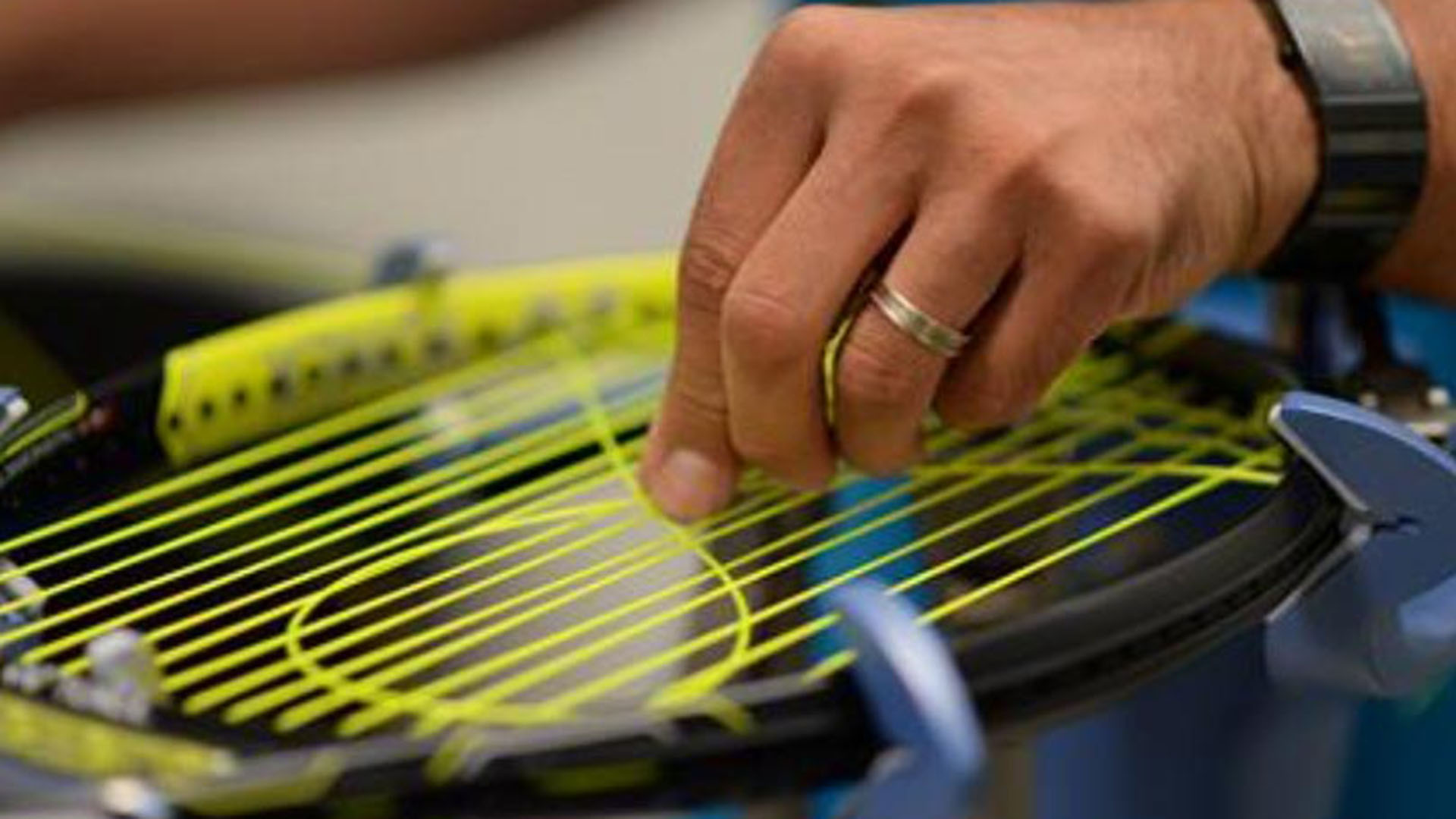
Official film the Championships Wimbledon 2017
08/12/2021
Είναι καλό το εργοστασιακό πλέξιμο της ρακέτας;
08/12/2021
Official film the Championships Wimbledon 2017
08/12/2021
Είναι καλό το εργοστασιακό πλέξιμο της ρακέτας;
08/12/2021Meet the team behind the perfect racket.
A few yards from the Pimm’s bar on Murray Mound – in a long shed, behind a hedge, part of the smartly refurbished Aorangi Pavilion – orders more complex than a couple of chilled drinks are placed daily over a long white counter.
“I’ll have 9 at 66/64, with a pre-stretch of 5 per cent, natural gut main, polyester cross, 4 knots, a light touch of stencilling for the logo, ready for the morning, and I want the same stringer on the same machine as before…”.
Welcome to the incredibly technical world of racket stringing, where a highly experienced team of 14 stand behind their stringing machines on anti-fatigue mats, poised to tune a batch of rackets to each individual player’s prescriptive mix of superstition and perfectionism. The standout pernickety player of 2015 is Sabine Lisicki. Keen to replicate the strong run she enjoyed to the quarter-finals in the ladies’ singles last year, her coach has been in each day, repeating her specs loud and clear – whereas Rafa Nadal, for all his quirky rituals and idiosyncrasies, is not at all fussy about his re-stringing preferences.
Before we go into the technicalities, can we just share an analogy that may demystify the business of string tension? Imagine the racket head is a trampoline. The lower the tension in the taut fabric stretched across the frame, the more oomph in the bounce; the tighter the tension, the more control in the movement off it. Interestingly, Mikhail Kukushkin, who faced Andy Murray in the first round, opted for the lowest tension so far this year. Both Williams sisters favour very highly taut strings.
Rackets strung the day before the tournamentFor head stringer Paul Skipp, work starts as early as 5am on the busy early days of the Championships and finishes after the last ball has been struck. His tools of the trade, kept in an integral tray on the machine, include cutters (to cut out existing strings), smaller cutters (to cut individual strings, for example the excess left at the end of the stringing process), tiny pliers (to feed strings through at tie-off), a setting-off awl (to help straighten strings) and a selection of starting clamps (a multi-use tool).
Rackets are brought in by player or coach. Their previous record is brought up on the computer and the specifications confirmed.
Two labels are printed off, one with the order, the other to stick on the inside of the handle for players to check when they pull a fresh racket from their bag on court. Lengths of strings are cut from rolls, and the package of component parts handed to a stringer.
The first job is to cut out the old strings. Often these will be unused rackets that were only strung to the requisite tension the day before, so the stringer has to destroy his or her own handiwork, but it’s a necessary process. There might be masses of zing in the racket head for a normal person, but not for a pro for whom a winning margin is often very, very fine. The racket frame will then be clamped on to the turntable and work begins. Here are some facts and figures:
– If a racket is strung with one piece, the length of string required is 36 feet (11 metres).
– If the main strings and cross strings are to be a mix of polyester and natural gut, 20ft (6m) is required for mains and 18ft (5.5m) for crosses.
– Each stringer deals with up to 35 rackets a day on the busy, early days of the tournament.
– On the Sunday before the opening day, 425 rackets were strung. On Day 1, 375 went through the system.
– Extremes of tension run from a low of 10 kilos on the main strings and 9 kilos on the cross strings and a tightest of 32 kilos on both. The tournament average is 23 kilos.
– The most rackets requested by one player per day is 10 (Kei Nishikori); doubles players may bank on one or two.
It’s a technical task, requiring good humour, nimble fingers and excellent concentration, but each stringer admits to an emotional investment in their handiwork. “I always follow my rackets,” says Skipp. “In last year’s men’s doubles final, I had prepared rackets for Jack Sock and Vasek Pospisil and one of my colleagues had done the Bryan brothers. It was mine against his. When my guys won, we shook hands. It was a nice bit of banter.”
source: www.wimbledon.com
